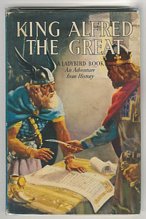 Hello, like our host my name is Aaron and I’d like to thank him for inviting us to contribute to his Fab Five series. I write a blog, Europeenses which nominally traces the route of a long distance cycle tour through parts of North-West and Central Europe that I had intended to make this year. Changing circumstances meant that I’m not able to make the tour but as I’d already started to research and draft entries I decided to go ahead with the blog anyway. In it, I write about historical events that relate to the towns, cities, or regions I’m theoretically passing through, with a handful of short biographies, regional recipes, and other pieces thrown in for good measure. Just over two months in I find myself not that far from reaching the end of the ‘journey’, which means I’ll have to rethink the purpose of my blog. Luckily Europe has a lot of history and connections with every part of the world, so I shouldn’t have too much of a problem.
Hello, like our host my name is Aaron and I’d like to thank him for inviting us to contribute to his Fab Five series. I write a blog, Europeenses which nominally traces the route of a long distance cycle tour through parts of North-West and Central Europe that I had intended to make this year. Changing circumstances meant that I’m not able to make the tour but as I’d already started to research and draft entries I decided to go ahead with the blog anyway. In it, I write about historical events that relate to the towns, cities, or regions I’m theoretically passing through, with a handful of short biographies, regional recipes, and other pieces thrown in for good measure. Just over two months in I find myself not that far from reaching the end of the ‘journey’, which means I’ll have to rethink the purpose of my blog. Luckily Europe has a lot of history and connections with every part of the world, so I shouldn’t have too much of a problem.
Currently I work as a Librarian at the UK’s Joint Services Command and Staff College Library, which allows me to indulge my interest in history on a regular basis. Some of the Library’s archive collection has been digitized, so if you’re interested in World War One Tanks, The Independent Bombing Force of 1918, Operation Sealion, or Operation Overlord, you may like to take a look at some scanned documents from our archive. For my five I’ve chosen a person whose writing influenced my love of history, a person whose writing influenced history, a person who was influenced by that writing, a person who worked to end that influence, and finally a person whose actions didn’t ultimately influence history, but who nonetheless played an important role.



 Statue of Cuauhtémoc in Mexico City.
Statue of Cuauhtémoc in Mexico City. 




